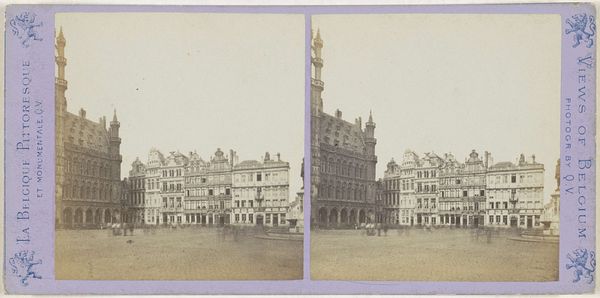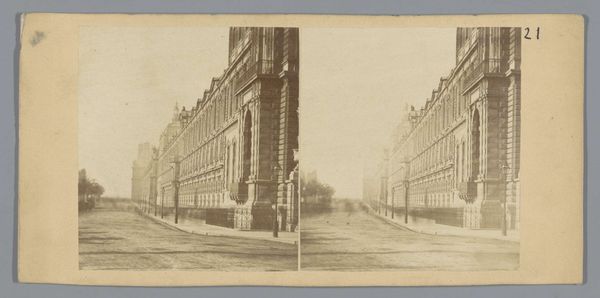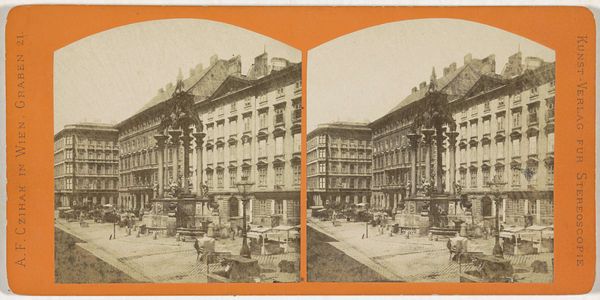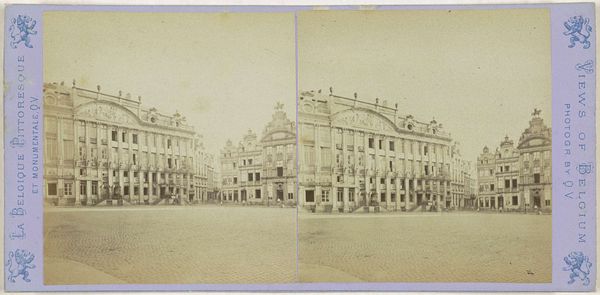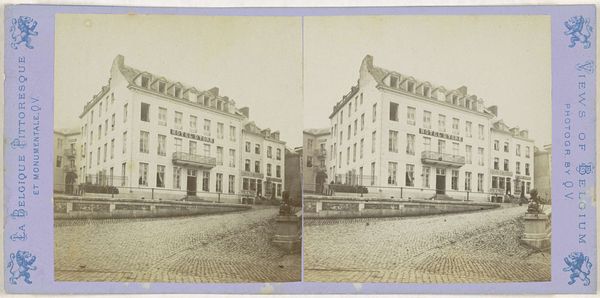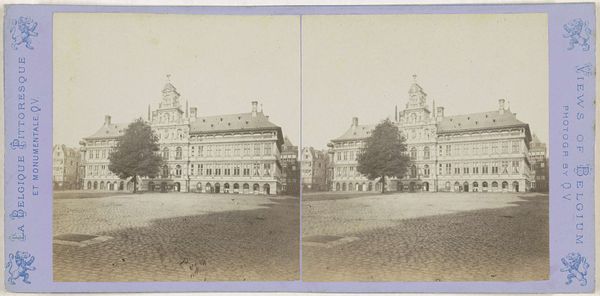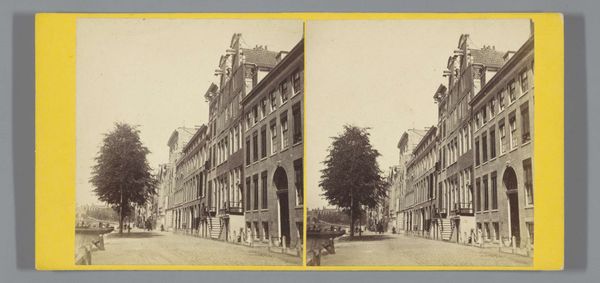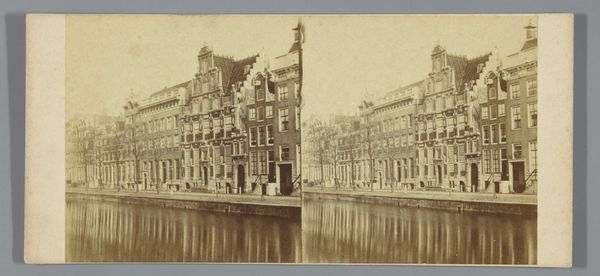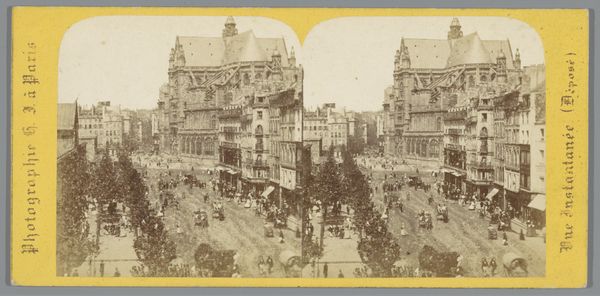
Gezicht op de Grote Markt en het stadhuis in Antwerpen 1866 - 1870
0:00
0:00
juleshippolytequeval
Rijksmuseum
photography, albumen-print
#
photography
#
cityscape
#
albumen-print
#
realism
Dimensions: height 87 mm, width 176 mm
Copyright: Rijks Museum: Open Domain
Jules Hippolyte Quéval captured this stereograph of the Grote Markt and the Antwerp City Hall using the then-new technology of photography. Notice how the composition is anchored by the sharp lines of the cobblestone street, leading the eye to the imposing architecture. The buildings are rendered with a detailed texture. The subdued sepia tones evoke a sense of nostalgia, emphasizing the historical weight of the scene. Quéval’s choice of photography as a medium challenges traditional art forms. Photography, with its claim to objectivity, allowed for a new kind of visual documentation, opening a debate about art and representation. The stereoscopic format—two images side-by-side to create a 3D effect—further complicates our perception, inviting us to question the nature of reality itself. The very act of framing this scene is a statement, suggesting that even in its infancy, photography was capable of engaging with complex ideas about space, perception, and historical memory. The subdued tonality and detailed textures function not merely aesthetically but as part of a larger discourse on how we understand and document the world around us.
Comments
No comments
Be the first to comment and join the conversation on the ultimate creative platform.

